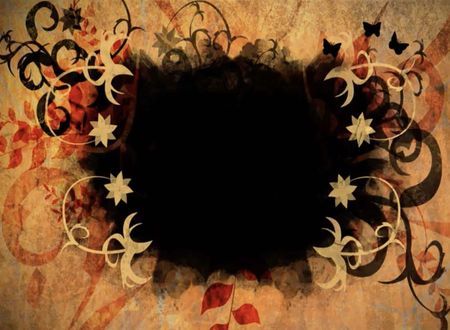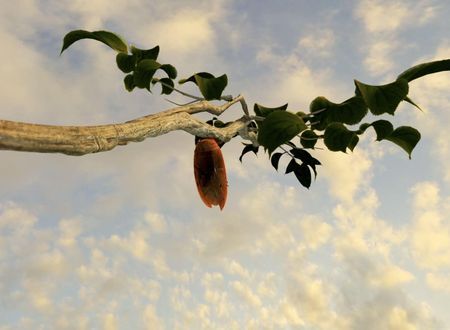My family has been ultra conservative when it comes to venturing out during the pandemic. My in-laws visited the ISKCON temple in Chennai and told us that they had an enjoyable experience. They reported that not many people came to the temple, and that they could maintain social distancing quite easily (which is not always the case in a crowded city such as Chennai). My wife, soon-to-be-two-year-old son and I decided that the ISKCON is a great opportunity to venture out safely. And a week later, we did.
Now, I didn’t know all that much about ISKCON. During my Maryland days, when I had gone to sell my used textbooks, there was a pile of free books that we were allowed to take. One book was Bhagavad Gita As It Is by Srila Prabhupada, which I took home, but never once read. When I went to Bengaluru for a National Bridge tournament a few years ago, an ISKCON temple was right by the hotel we stayed. I visited the temple, and marvelled at the magnitude of the building, and the sheer variety of food options at the food court. But I didn’t know much else about ISKCON.
True to word, the temple was huge, glorious, and we were able to maintain social distancing while taking in the experience. I told myself that I would not buy any books at the bookstore (I usually cannot resist buying a book whenever I see a bookstore), for I had several books in my to-read list that I hadn’t finished. I browsed the books anyway – for book shops and libraries are verily heaven on earth – and saw one book that seemed familiar – A Journey Home by Radhanath Swami. I recalled that Shalini Pandey had written positive words about the book on os.me. I nevertheless stuck to my plan, and did not buy the book. In any case, I could buy the book on Amazon later for a cheaper price, I thought to myself.
After we bought delicious samosas and other delicacies from the snack shop and returned back to the car, my wife told me that she had specifically made a purchase or two here at ISKCON to do her tiny part to patronize the establishment during the pandemic. That inspired me – I went up and bought A Journey Home – eschewing my plan of not buying a book, as well as my plan of buying this book from Amazon later. I was not prepared for the reading experience I was about to have.
I started reading the book that day. This book was about 19-year old Richard Slavin who was born in Chicago, who had spiritual tendencies from his childhood, and who was involved in the counterculture of the 1960s. While in college, he took part in an African-American rally, to be jeered by white racists, as well as hated by the black speakers who screamed out for revolution. Richard and his friends decided to take a trip to Europe before going back to school. After landing in Luxembourg, Richard ended up traveling further to Holland, to England, to France, to Switzerland, and then to Italy. In Italy, Richard spoke to a pastor from a church in Rome, and received some of his first words pertaining to spirituality – “Our path may appear in different forms, but the Kingdom of God is the goal we all share. It is the men of small mind who create confusion. Do not be troubled my son. You are sincere. God will guide you.” From Italy, Richard went to Greece. In Greece, Richard received an instruction from his heart which said “Go to India”. He followed this calling and embarked on a six-month journey to travel to India.
To go India, he would have to go via Turkey, where a cholera epidemic was raging. He threw caution to the wind and decided to go anyway. From Turkey, he went to Iran, followed by Afghanistan, then Pakistan, and finally reached the borders of India. Traveling with no money, he had had a variety of experiences – some close shaves, a lot of unsanitary conditions, a lot of helpful people, as well as rich education from kind people who taught him the tenets of Islam. When he reached the borders of India, the immigration officer was disgusted by the fact that he didn’t have any money, and refused him entry. When she left for the day, she gave specific instruction to her subordinate not to let Richard in. Waiting patiently and persistently, he recounted how he had endured hardships for six months all to travel to India and discover his spiritual calling, to the elderly immigration officer. “I have left behind the comforts of America to search for India’s spiritual treasures. I’ve hitchhiked all the way from London to reach your homeland”, he said. “I yearn to find the way to God. Please be kind to me. Someday, I promise, to do something good for the people of India. Honestly, sir, I will help your people. Please give me a chance.” Tears filled the eyes of this officer, and following his heart, he welcomed Richard into India. Spoiler Alert – Richard fulfilled his promise – as Radhanath Swami, he would go on to establish mid-day meals which feed more than one lakh children each day, build a hospital, as well as work on several other worthwhile initiatives.
In India, Richard met several spiritual masters, teachers and Yogis, and traveled as a wandering Sadhu in the Himalayas, collecting with him rich experiences. Several Masters offered to initiate him, but he did not want to be initiated until he was convinced that he could dedicate his life to the master who initiated him. Richard purchased the photo of a blue boy in Delhi, which appealed to him, who he would come to know much later was Krishna when he attended Srila Prabhupada’s discourses in Bombay. An inner voice told him that Srila Prabhupada was his Guru, but he wasn’t ready to accept it just yet.
Richard went further to Varanasi, the Himalayas, and a chance encounter made him spend several days in Vrindavan. After discovering the path of Bhakti, Richard finally decided that he was ready to dedicate his life to a master, and accepted Srila Prabhupada as his Guru, and eventually became Radhanath Swami.
Reading this book moved me profoundly. I couldn’t quite explain why or how I was moved. I found myself violently bursting into tears reading random parts of the book – something that had never happened before when reading a book. After reading this book, I found that my devotional quotient had increased as well. I had always been aware that my devotional quotient was lacking and needed Vitamins – this book was what the doctor ordered. Several of the points made in this book resonated with me deeply – here are a couple:
Regarding the fact that after constructing the Taj Mahal, he was conquered and imprisoned by his own son, and when he suffered miserably in prison his family battled and murdered one another:
Such is the pitiful consequence of greed for power. In the heart that harbors the weed of selfish greed, the flower of love cannot survive. To conquer one’s envy, lust and greed, now that is truly monumental.
His observations upon seeing fish captured by fishermen:
We are all like fish that have separated from the sea of divine consciousness. For a person to be happy outside his or her natural relation with God is like a fish trying to enjoy life outside of the water, on the dry sand. Holy people go to great extremes to help even one person to return to his or her natural spiritual consciousness, to the sea of true joy. But the net of maya, or illusion, snatches away the minds of the masses, diverting us from our true self-interest.
Several seemingly disconnected events had to occur for me to get my hands on this book and receive Divine inspiration. My gratitude to everyone at large whose kindness impacts people positively, and my gratitude for the Divine for giving me rich experiences like this.









Comments & Discussion
26 COMMENTS
Please login to read members' comments and participate in the discussion.